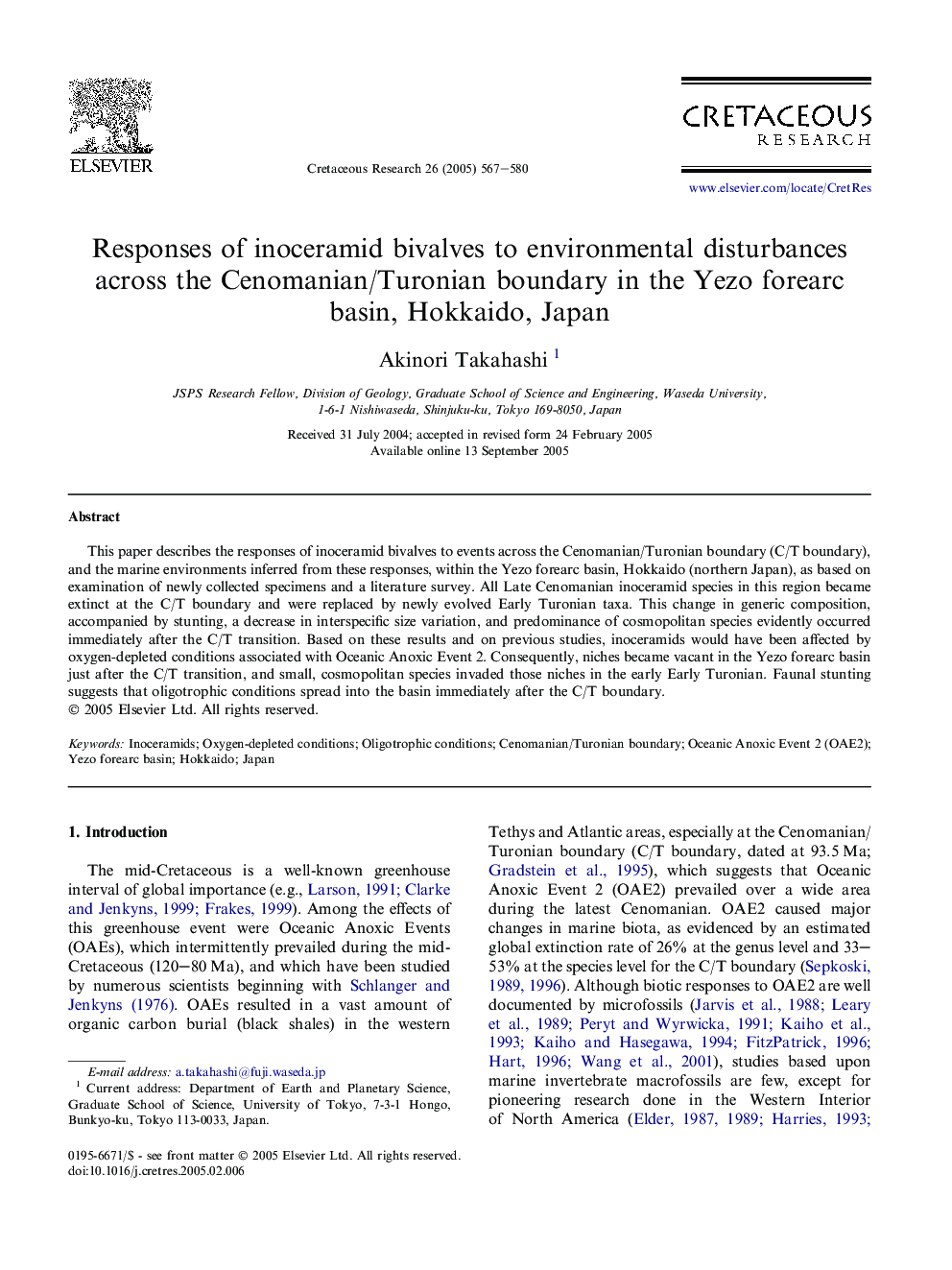| Article ID | Journal | Published Year | Pages | File Type |
|---|---|---|---|---|
| 9539050 | Cretaceous Research | 2005 | 14 Pages |
Abstract
This paper describes the responses of inoceramid bivalves to events across the Cenomanian/Turonian boundary (C/T boundary), and the marine environments inferred from these responses, within the Yezo forearc basin, Hokkaido (northern Japan), as based on examination of newly collected specimens and a literature survey. All Late Cenomanian inoceramid species in this region became extinct at the C/T boundary and were replaced by newly evolved Early Turonian taxa. This change in generic composition, accompanied by stunting, a decrease in interspecific size variation, and predominance of cosmopolitan species evidently occurred immediately after the C/T transition. Based on these results and on previous studies, inoceramids would have been affected by oxygen-depleted conditions associated with Oceanic Anoxic Event 2. Consequently, niches became vacant in the Yezo forearc basin just after the C/T transition, and small, cosmopolitan species invaded those niches in the early Early Turonian. Faunal stunting suggests that oligotrophic conditions spread into the basin immediately after the C/T boundary.
Related Topics
Physical Sciences and Engineering
Earth and Planetary Sciences
Palaeontology
Authors
Akinori Takahashi,
